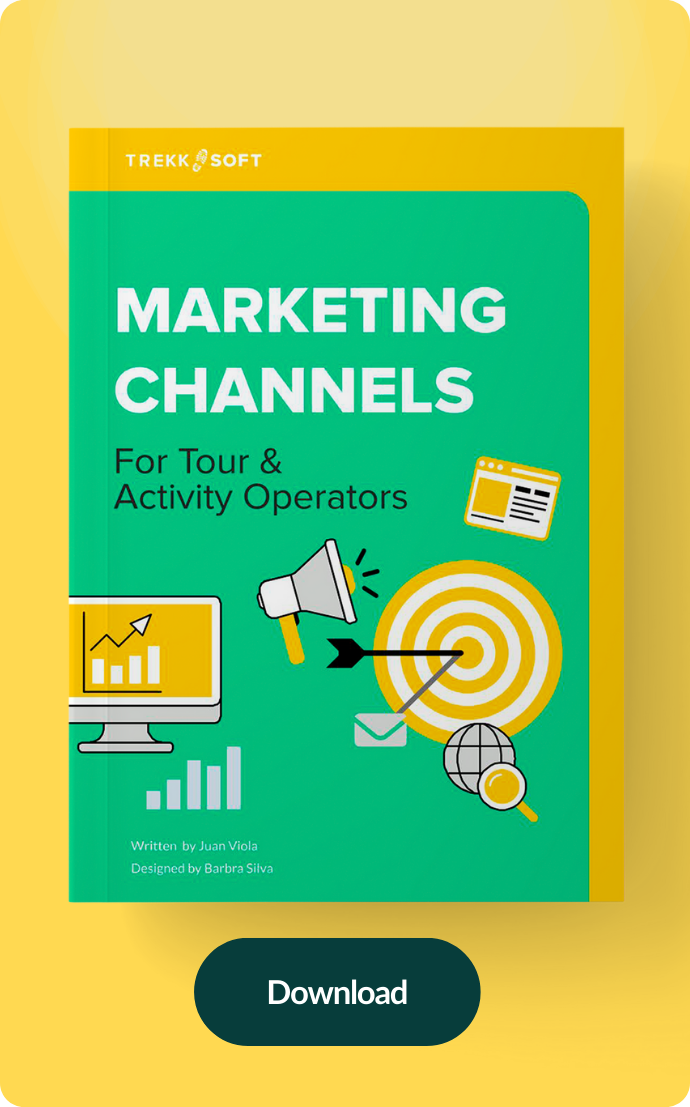For tour and activity operators, maximizing revenue isn’t just a goal, but a necessity for your business to thrive. In fact, the global travel agency and tour operator market is projected to reach $1.69 trillion by 2030. One way to do this is with a strategy called yield management.
Yield management has become a powerful tool for your and activity operators that want to optimize their earnings. In this article, we’re going to go over what yield management is and offer practical advice on how to use it effectively within your business.
What is yield management?
First, it’s important to understand what yield management is. Yield management is essentially a strategy to sell tours and activities at the highest price based on a couple of factors, including:
- Demand
- Timing
- Customer behavior
- Availability
It’s all about making sure you’re advertising tours and activities at the right time for the right price. Keep in mind that it’s not just about making sure you book as many tours as possible, but strategically managing your inventory such as the seats on a tour bus.
Effective yield management relies heavily on analyzing past bookings and customer data. Here’s an example to give you a better understanding of what we mean.
Whale watching tours
Let’s say you run a whale watching tour company. Peak season means your tours will sell out fast. With high demand, it’s easy to increase prices because tourists will pay them. Think about it, typically whale watching tours are a pretty expensive excursion due to the specific times of year they can be done.
For instance, if your tour tickets are typically $100, during peak season you could raise them to $150. Generally, tourists know they’re going to pay more if they book at the last minute or during a popular time of year, so you can increase revenue and make sure your tours are full.
Another option is tiered pricing. This could mean tourists who book earlier get a discount, and those booking last minute will pay a premium. That way, you not only maximize revenue from last-minute bookings but it encourages early sales. This can help you plan better, and even add more tours.
How to implement an effective yield management strategy
The good news is that creating a solid yield management strategy doesn’t have to be complicated. Following these steps will set you up for success.
Analyze your past data
The first thing you should do for yield management is gather and analyze all of your past booking data. Check for patterns that can help you make better pricing decisions such as:
- Peak and off-peak seasons: As we mentioned in the whale tour example, find the times when demand is highest and lowest throughout the year.
- Booking windows: You’ll need to figure out how far in advance customers are generally booking your tours.
- Demographics: It’s important to understand who your customers are along with their spending habits and tour preferences.
Starting with an in-depth analysis of your data gives you a solid foundation for making pricing decisions and predicting future demand.
Segmentation
Remember, not all customers are the same. The different segments are likely willing to pay different prices for tours. Here are some ways you can segment your customers:
- Time of booking: Last minute vs. early booking.
- Experience type: Luxury and premium experiences vs. budget conscious.
- Group size: Individual travelers vs. groups or families.
Knowing how your customers are segmented can help you tailor your pricing strategy effectively.
Create a flexible pricing structure
One of the key components of yield management is using a flexible pricing structure. That way, it can be adjusted based on demand and other factors.
- Tiered pricing: Offer different pricing levels based on when a booking is made. Early bookers get a lower price, and the last-minute planners pay a premium rate.
- Dynamic pricing: You can adjust prices in real-time based on the current demand. As a tour is filling up, you can make the remaining seats more expensive.
- Seasonal pricing: Increase your prices during peak seasons and offer discounts or promotions during slow seasons.
Monitor and adjust your strategy
Don’t forget that yield management is an ongoing process that requires continuous monitoring and adjustment. Keep an eye on your bookings, revenue and customer feedback. You’ll probably need to tweak your strategy a few times as needed.
- Monitor booking trends: Regularly view your booking data to spot any emerging trends or changes in customer behavior.
- Adjust pricing tactics: If a certain strategy isn’t working very well, don’t be afraid to make changes. If your bookings are slow, you could try a limited-time discount to incentivize customers.
- Test and optimize: Try experimenting with different pricing strategies and promos to see what your customers like best. Over time, you’ll be able to refine your approach and find a good balance.
Leverage TrekkSoft for comprehensive yield management
If you want to implement yield management effectively, you’ll need the right online tools! Here’s how our solutions empower you to refine your approach:
- Implement yield management pricing with ease: configure dynamic seat pricing based on availability to maximize revenue per customer.
- Leverage sophisticated reporting for strategic insights: start using our Business Intelligence feature and deep dive into in-depth analytics. Understand customer behaviour, identify peak and off-peak trends, and analyse sales performance to adjust your offerings accordingly.
- Discount codes and gift vouchers: generate discounts and gift certificates, showcase these deals during checkout on your site. These incentives not only enhance customer satisfaction but also serve as powerful tools to balance out demand and promote your less popular tours or activities.
- Add-ons and extras: personalize your customers' experiences and add value to your bookings by incorporating optional add-ons. From additional activities to special amenities, allow customers to tailor their experiences while increasing your average transaction value.
Ready to implement a yield management strategy? TrekkSoft is here to help! Remember to do your research and figure out a plan to maximize your revenue and maintain your inventory. Schedule a demo with TrekkSoft today.




